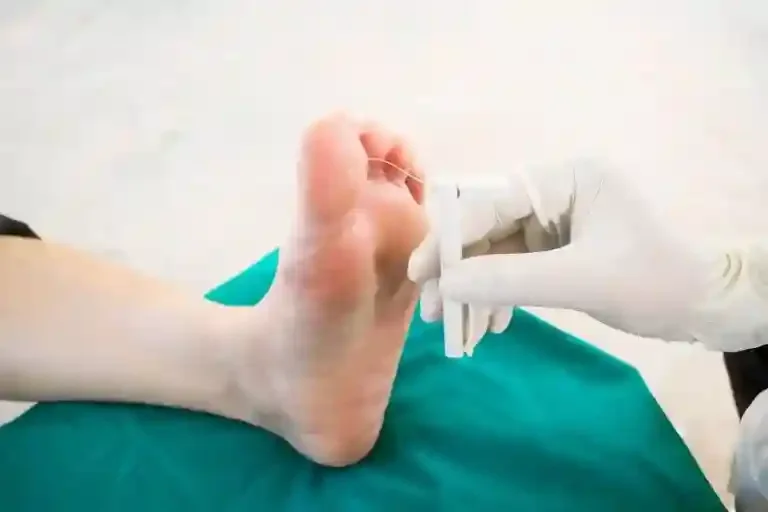Diabetes is a health condition involving elevated levels of glucose (sugar) in the blood. It is a common health condition that affects quite a large portion of the population. Diabetic Charcot Foot is a common side effect of unregulated diabetes, and it can cause much damage if left untreated, which may not cause painful symptoms in the beginning. It requires regular screening and prompt Charcot Foot treatment to prevent damage caused by this medical condition.
What is Diabetic Charcot Foot?
Charcot Foot is a rare complication of diabetes-related neuropathy, which entails nerve damage that may cause loss of sensation in the lower legs and feet. This makes it impossible for the affected diabetic patient to feel pain or experience other symptoms that may be indicative of a hurting foot. Diabetic Charcot Foot may occur as a result of a small injury or infection that may cause severe complications so that they don’t feel or notice any painful symptoms.
If the Charcot Foot is not treated as soon as possible, it may lead to the collapsing of joints in the affected foot, which can permanently alter the ability to unlock the full movement of the foot. It can also cause an infection in the feet to spread or worsen quickly. In severe cases, it may also lead to life-threatening conditions, which may then require amputation.
The best way to prevent diabetic Charcot Foot is to keep diabetes under control and check the blood sugar level regularly. It would also be a good idea to get the feet checked regularly by a healthcare provider to look for any changes in sensation like pain, pressure, or touch.
Diabetic Charcot Foot Symptoms
Although it may be possible that diabetic patients with the Charcot Foot don’t feel pain initially, they may experience other symptoms. The earliest diabetic Charcot Foot symptoms may be swelling of the affected foot, which can occur spontaneously without any infection or injury. The other diabetic Charcot Foot symptoms may include:
- Painful foot
- Redness or discoloration
- Feels warm to the touch
It is important to visit a healthcare provider when these symptoms appear to prevent further complications. An advanced stage of diabetic Charcot Foot may cause symptoms such as:
- Changes in the shape of the toe or ankle
- Rounded or swollen arch of the affected foot (rocker-bottom foot)
- Foot ulcers
Diabetic Charcot Foot Causes
Charcot Foot is often associated with diabetic patients. It may happen when a foot gets injured or is affected by an infection. In most cases, patients with diabetic Charcot Foot do not feel pain. Sometimes, there is no specific cause for Charcot Foot, and it may be triggered by conditions like:
- Unhealing sore foot
- Sprain or broken bone in the foot that hasn’t received treatment
- Foot surgery that doesn’t heal properly
Other medical conditions in diabetic patients that may also be diabetic Charcot Foot causes include the following:
- Alcohol or drug abuse
- Spinal cord injury or disease
- HIV
- Parkinson’s disease
- Syphilis
Risk Factors of Diabetic Charcot Foot
Charcot Foot is almost always a side effect of unregulated diabetes or hyperglycemia (a condition of high blood sugar), leading to diabetes-related neuropathy. People who have had diabetes for more than seven years and smoke and/or drink are at a higher risk of neuropathy. A diabetic person is also likely to experience neuropathy due to other health conditions such as:
- Obesity or being overweight
- High blood pressure (hypertension)
- Kidney disease
- High cholesterol
Complications of Charcot Foot
Unregulated high blood sugar leading to Charcot Foot may cause various complications if left untreated; these may include:
- Permanently altering the shape or size of the affected foot making it hard to fit into the regularly used shoe size
- Spreading of infection to the other parts of the body
- In severe cases, amputations of the affected foot or ankle
Diabetic Charcot Foot Diagnosis
If an individual experiences swelling, pain, or warmth in one foot, it would be best for them to visit a healthcare provider. They may provide a diagnosis based on physical examination and some imaging tests. They may examine both the feet and ankles to look for changes or differences in the feet. They may also check the degree of sensation or feelings of touch in the feet, ankles, and toes.
The diagnostic tests that may be recommended by the healthcare provider or doctors may include the following:
- X-rays of the feet
- MRI scan of the feet
- Blood tests to look for signs of infection
Diabetic Charcot Foot Treatment
Based on the diagnosis by the healthcare provider, patients may be treated according to the symptoms and severity of the condition. As a first step towards Charcot Foot treatment, preventing further spread of the infection is necessary, for which the healthcare provider may recommend refraining from walking on the feet to worsen the condition. They may also recommend pain-relieving medications to provide relief from symptoms and reduce the impact that Charcot Foot may have on the patient’s ability to use the foot.
The most common diabetic Charcot Foot treatment may include the following.
Preventing Pressure on the Foot
Doctors may recommend putting less pressure or weight on the feet to prevent swelling and injuries such as bone fractures from worsening. They may suggest using a supportive cane or crutch.
Changes in Footwear
Doctors might suggest wearing special footwear that supports the feet and keeps the toes in the right position. Such shoes may need to be custom-made, which may help relieve pressure from the ankles and feet when walking.
Physical Therapy
Physical therapy is a necessary Charcot Foot treatment approach to improve circulation and movements of the joints, ankles, and legs. This can help to manage symptoms such as pain and stiffness. Physiotherapy specialists may also help customize a set of exercises and movements to help patients make specific movement advances.
Charcot Foot Surgery
If the condition worsens, the patient may experience severe symptoms involving collapsed bones & joints, ulcers, or an infection that may have spread. Progressing of Charcot Foot may damage the foot and ankle joints. Surgery for Charcot Foot may help to repair damage and stabilize the foot. In case of advanced or severe cases, amputation of the affected area may be needed.
Preventing Charcot Foot
The best way to manage diabetic Charcot Foot is to prevent it by managing diabetes as well as the overall health. Controlling high blood sugar may prevent hyperglycemia and reduce the risk of neuropathy. It is also essential to get the feet checked by healthcare providers regularly to ensure optimal feet condition. A diabetic person may also reduce the risk of Charcot Foot by doing the following things:
- Checking the feet every day to look for changes, particularly in between the toes
- Getting the feet checked at every visit to the doctor
- Keeping the fingernails trimmed and clean
- Keeping the feet elevated when sitting and wiggling the feet often to ensure proper blood flow.
- Wearing socks and shoes that fit well
- Washing the feet thoroughly and drying them every time they get wet
- Keeping the feet dry and moisturized avoid infection promptly and seek medical attention if required
At Wockhardt Hospitals, general physicians and primary care doctors provide comprehensive healthcare services with immense care and compassion to help treat and manage a wide range of health conditions and comorbidities. Apt management and prevention of various health problems are promptly treated here in a conducive environment to ensure optimal recovery and maximize the long-term benefits of Charcot Foot treatment.












